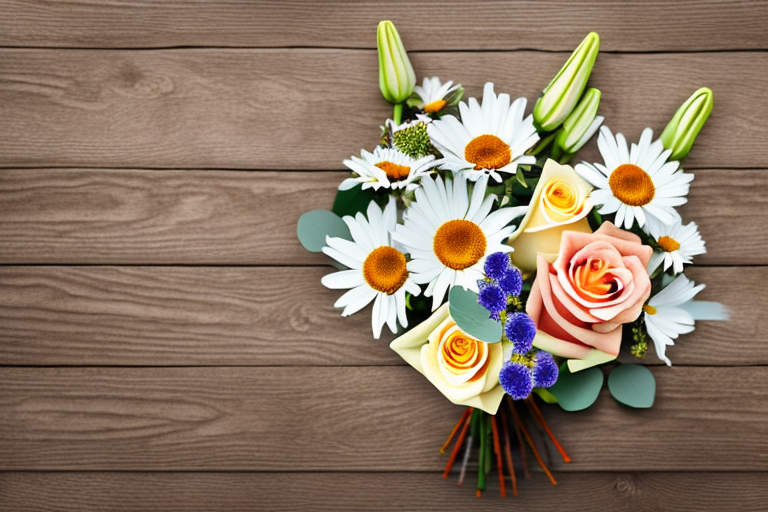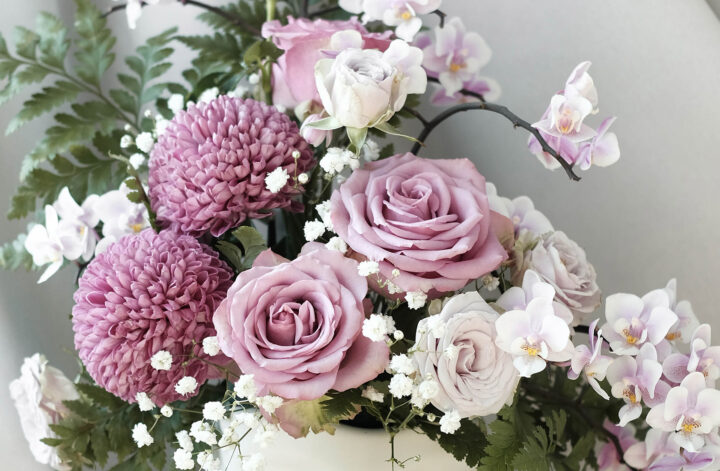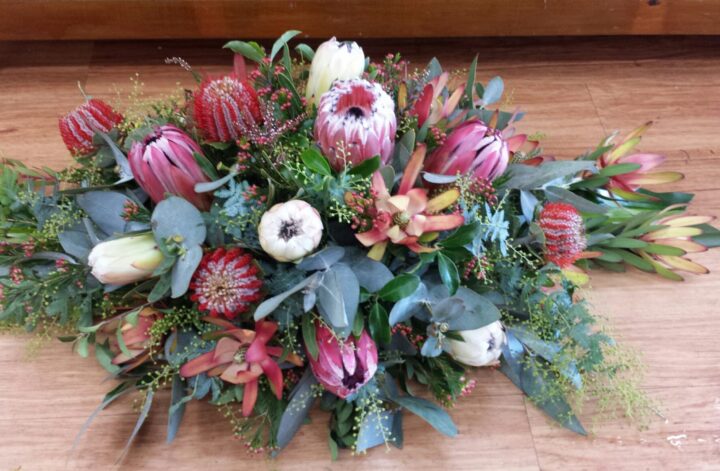Losing a loved one is an incredibly difficult experience, and during this time, it’s important to find ways to express your condolences and support to the grieving family. One longstanding way to do this is by sending funeral flowers. Not only do these floral arrangements add beauty to the memorial service, but they also carry deep symbolism and represent the importance of expressing sympathy during a time of loss.
Understanding the Tradition of Funeral Flowers
The tradition of sending funeral wreaths Sydney dates back centuries and spans across various cultures and religions. Understanding the history and symbolism behind these floral tributes can help you choose the most appropriate arrangement to convey your condolences.
The Historical Significance of Funeral Flowers
In ancient times, flowers were believed to have a spiritual connection and were used to ward off evil spirits and honor the deceased. For example, ancient Egyptians would place flowers, such as lotus blossoms, at the tombs of their loved ones as a way to ensure a peaceful afterlife. Similarly, the Ancient Greeks placed wreaths made from laurel leaves and flowers on graves to symbolize victory over death.
As time went on, funeral flowers became more than just a means of spiritual protection. They evolved to become a way to show respect, love, and support to the grieving family. Today, they serve as a visible token of sympathy and a way to honor the memory of the deceased.
Cultural Differences in Funeral Flower Traditions
While funeral flowers hold universal meanings, specific traditions and customs may vary across different cultures and religions. For example, in some Asian cultures, white chrysanthemums are commonly used, symbolizing grief and paying homage to the dead. Conversely, red flowers are often considered inappropriate as they are associated with joy and celebrations.

It is important to be mindful of these cultural differences when selecting funeral flowers. Taking the time to understand the specific customs of the bereaved family can go a long way in showing respect and sensitivity during this difficult time.
In addition to cultural differences, the choice of flowers can also convey personal messages and meanings. For instance, lilies are often associated with purity and innocence, making them a popular choice for funerals. Roses, on the other hand, can symbolize love and beauty, while carnations represent admiration and remembrance.
Furthermore, the arrangement and color of the flowers can also carry significance. A standing spray or wreath is a common choice for a funeral service, while a bouquet or basket may be more suitable for sending condolences to the family’s home. As for colors, white flowers are often chosen to symbolize purity and peace, while soft pastel shades can evoke a sense of tranquility and serenity.
The Language of Flowers in Mourning
In addition to their historical significance and cultural variations, funeral flowers also carry symbolic meanings associated with different types and colors of flowers. Understanding these meanings can help you choose an arrangement that best represents your sentiments.
When it comes to selecting funeral flowers, it’s important to consider the specific symbolism associated with different types of blooms. One commonly chosen flower is the lily, which represents purity and the soul of the departed. Its elegant and delicate petals make it a popular choice for expressing condolences. Another flower often seen at funerals is the rose, particularly white ones. These symbolize purity, love, and innocence, making them a meaningful choice to honor the memory of a loved one.
Chrysanthemums, on the other hand, are often regarded as a symbol of death and mourning in many cultures. Their vibrant colors and intricate petals make them a striking addition to any funeral arrangement. These flowers serve as a reminder of the cycle of life and the beauty that can be found even in times of sorrow.
While lilies, roses, and chrysanthemums are commonly associated with mourning and sympathy, there are other flowers that carry their own unique meanings. Carnations, for example, are often chosen to express deep love, respect, and remembrance. Their ruffled petals and sweet fragrance make them a heartfelt choice for honoring the memory of a loved one. Gladioli, with their tall stalks and vibrant blooms, also symbolize strength and integrity, making them a fitting tribute to someone who lived their life with courage and determination.
It’s important to note that the meanings of flowers may vary slightly across cultures and traditions. Therefore, it’s always a good idea to research the specific symbolism associated with different flowers before making a final decision. By understanding the significance behind each bloom, you can ensure that your floral arrangement conveys the right sentiment and pays a meaningful tribute to the departed.
The Role of Color in Funeral Flower Symbolism
Colors also play a significant role in funeral flower symbolism. While white flowers represent purity and innocence, they are not the only color choice when it comes to expressing condolences. Red flowers, for instance, symbolize love and passion, making them a powerful statement of affection for the departed. Pink flowers, on the other hand, are often associated with grace and admiration. They are a beautiful choice to honor someone who lived a full and vibrant life, radiating joy and love.
However, it’s important to exercise caution when selecting colors for funeral flowers. While yellow flowers are typically associated with joy and happiness, they are not generally considered appropriate for funerals. This is because yellow is often associated with cheerful occasions rather than somber ones. It’s crucial to be mindful of the overall tone and mood of the event when choosing the color of your floral arrangement.
Understanding the meanings behind different colors can help you choose an arrangement that conveys the right sentiment and pays tribute to the departed in a respectful and meaningful way. By carefully selecting the type and color of flowers, you can create a beautiful and heartfelt display that honors the memory of your loved one.

Etiquette for Sending Funeral Flowers
When it comes to sending funeral flowers, there are certain etiquette guidelines to keep in mind to ensure your gestures are both thoughtful and appropriate.
When to Send Funeral Flowers
It’s generally best to send funeral flowers to the funeral home or the location of the memorial service. Arranging for flowers to arrive a day or two before the service ensures that they are present during the service and serve as a visible reminder of your condolences.
However, if you are unable to send flowers directly to the service, it is also acceptable to have them delivered to the family’s home or another appropriate location.
Appropriate Types of Funeral Flower Arrangements
There are several types of funeral flower arrangements to choose from, and the choice often depends on your relationship with the deceased and the grieving family. Common options include wreaths, casket sprays, standing sprays, and funeral baskets.
Wreaths are typically circular and symbolize eternity, while casket sprays are floral arrangements placed on top of the casket. Standing sprays are larger arrangements that usually stand on an easel next to the casket, and funeral baskets are elegant arrangements displayed at the service.
It’s advisable to consider the preferences and cultural traditions of the grieving family when selecting the specific type of arrangement. If in doubt, consulting the advice of a florist or a funeral director can help guide you in making an appropriate selection.
When choosing the flowers for a funeral arrangement, it’s important to consider the meaning behind different types of flowers. For example, lilies are often associated with funerals and symbolize the restored innocence of the soul of the deceased. Roses, on the other hand, can convey love and respect. Carnations are often used to express admiration and remembrance.
Another factor to consider is the color of the flowers. White flowers are commonly associated with purity and innocence, making them a popular choice for funeral arrangements. However, different cultures may have different color associations, so it’s important to be mindful of the family’s cultural background.
When sending funeral flowers, it’s thoughtful to include a personalized message or sympathy card. This allows you to express your condolences and offer support to the grieving family. Keep the message simple and heartfelt, acknowledging the loss and expressing your sympathy. If you were close to the deceased, you may also want to share a fond memory or offer assistance to the family during their time of grief.
Remember, the purpose of sending funeral flowers is to show support and offer comfort to the grieving family. By following these etiquette guidelines and considering the preferences of the family, you can ensure that your gesture is meaningful and respectful.

How to Choose the Right Funeral Flowers
Choosing the right funeral flowers involves considering both the preferences of the deceased and the wishes of the grieving family.
Considering the Deceased’s Preferences and Personality
When selecting funeral flowers, it’s thoughtful to take into account the preferences and personality of the deceased. Did they have a favorite flower or a special connection to a particular color or type of bloom? Incorporating these elements into the arrangement can serve as a touching tribute to their memory.
Taking into Account the Family’s Wishes
It’s equally important to respect the wishes of the grieving family when choosing funeral flowers. They may have specific requests or cultural customs that they would like to observe. By honoring their wishes, you show your support and consideration during this difficult time.
Writing a Condolence Message with Funeral Flowers
In addition to the floral arrangement itself, accompanying your funeral flowers with a heartfelt condolence message can provide comfort and support to the grieving family.
Tips for Crafting a Sincere Message
When writing a condolence message, it’s important to be sincere and empathetic. Begin by expressing your condolences and acknowledging the loss. Share special memories or stories you have about the deceased, or simply let the family know that you are there for them during this difficult time.
Avoid clichés or generic phrases and try to personalize your message to reflect your relationship with the deceased and the grieving family. Keep in mind that a thoughtful and genuine message can provide solace and support to those who are mourning.
Avoiding Common Mistakes in Condolence Messages
While it’s important to offer condolences, there are also some common mistakes to avoid when writing a condolence message. For example, it’s best to avoid religious or spiritual references unless you know the family’s beliefs.
Additionally, be mindful of the tone and content of your message. Avoid discussing the cause of death or offering unsolicited advice. Instead, focus on offering your support and expressing your sympathy in a respectful and compassionate manner.
By considering these tips, you can craft a condolence message that accompanies your funeral flowers and provides comfort to the grieving family.
Expressing condolences through the language of flowers is a timeless tradition that transcends cultures and time. By understanding the symbolism and etiquette of sending funeral flowers, you can ensure that your gesture of sympathy is both meaningful and appropriate. Remember to select the right types and colors of flowers, tailor your choices to the preferences of the deceased and the grieving family, and accompany your floral arrangement with a sincere condolence message. Together, these elements can provide solace and support to those who are grieving, offering a beautiful tribute to the memory of the departed.
More to read: Selecting Thoughtful Funeral Flowers to Honour a Loved One


